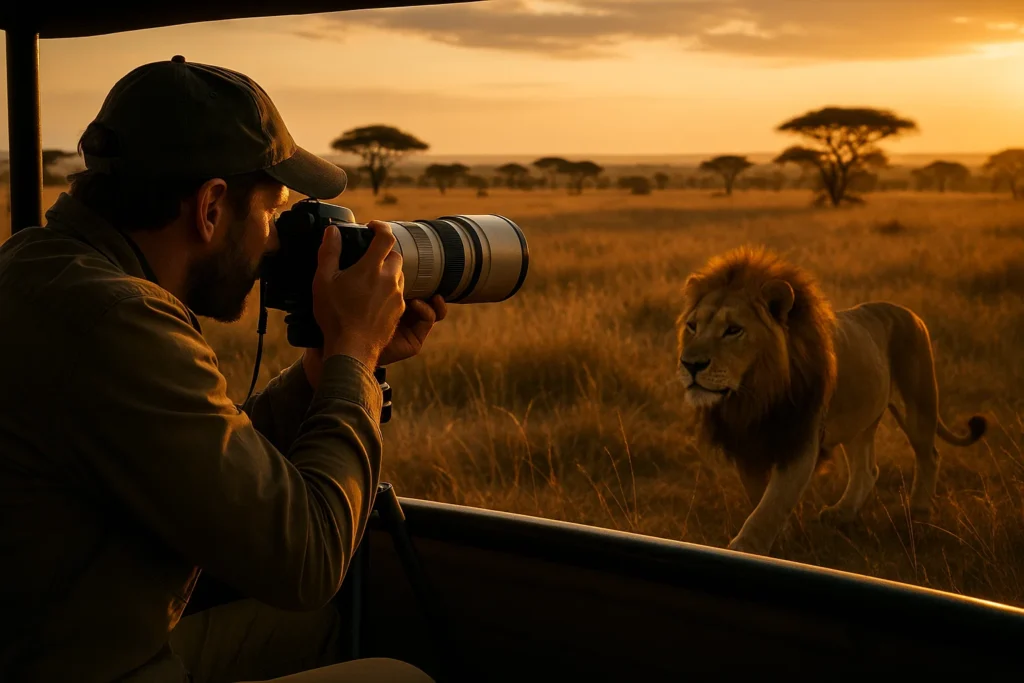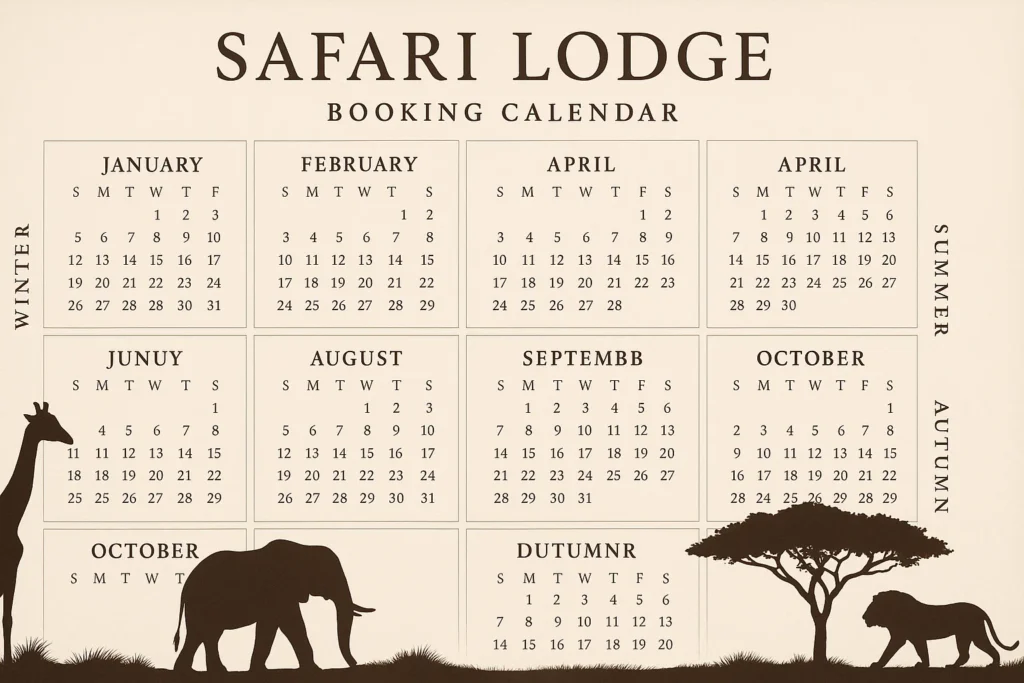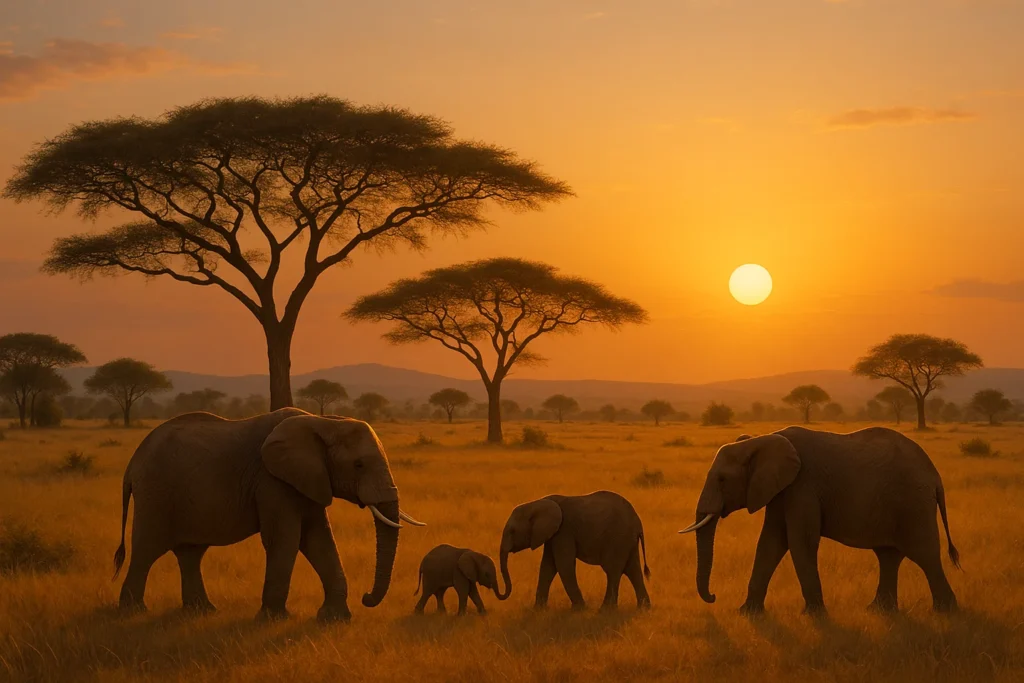For travelers passionate about photography, an African safari offers more than wildlife—it delivers cinematic frames under golden skies, dramatic animal behaviour, and immersive storytelling through a lens. Specialized photographic safaris focus on timing, locations, guides, and equipment to help you achieve those once‑in‑a‑lifetime shots.
Why choose a photographic safari?
Purpose-built for photographers
Unlike conventional group safaris, photo safaris are designed around light, framing, and timing. Experts schedule drives during the golden hours of dawn and dusk, position vehicles for optimal angles, and keep gear ready—so you’re always prepared.
Guided by professionals
Many tours are led by professional wildlife photographers or experienced guides trained in fieldcraft. They offer tips on composition, behavior prediction, and wildlife etiquette to enhance your learning and image quality.
Small groups, big impact
Photo safaris limit group sizes to ensure each participant gets enough time, guidance, and space to shoot without distraction from selfies or tourists—creating a focused, creative environment.
Camera gear and technical settings
Be camera-ready, shoot RAW
Always have your camera powered and set to FAST continuous shooting mode. Shoot in RAW (or RAW+JPEG) to retain maximum detail and flexibility in post‑processing.
Use fast shutter speed
Freeze movement by using shutter speeds above 1/1000 sec when capturing animals in motion or shooting from a moving vehicle.
Set autofocus wisely
For predictable subjects use single‑point AF; for moving wildlife use continuous/servo AF mode. Adjust aperture to narrow when needed or wide (e.g. f/2.8–f/5.6) to isolate the subject with beautiful background blur (bokeh).
Monitor ISO intelligently
Keep ISO on auto if light conditions change quickly. In bright scenes, lower ISO yields cleaner files; in low light, a higher ISO helps maintain fast shutter speed without underexposure.
Composition and fieldcraft tips
Be observant, always scanning
Wildlife action can unfold anywhere—behind, above or between bushes. Train your eyes to scan the environment constantly for movement or unusual shapes.
Frame with purpose
Incorporate leading lines, acacia branches, or textured grass to add storytelling depth. Unconventional angles—low-angles, tight crops, or wide scenes—can transform an ordinary shot into art.
Shoot downwind when possible
Animals can detect human scent easily. Position your vehicle or set-up downwind to avoid disturbance and improve proximity for sharp images properly.
Capture non‑animal scenes
Don’t just focus on big cats or elephants. Landscape details, interacting herds, birds in trees, golden light on plains—seize every photographic pause as creative opportunity.
Choosing the right destination and operator
Best safari destinations for photography
Top photo safari locations include Kenya’s Masai Mara, Tanzania’s Serengeti, Botswana’s Okavango, and Zimbabwe’s Mana Pools. These offer prolific wildlife and beautiful vistas perfect for photography workshops and specialized tours.
Well-known photography safari providers
Operators like Untamed Photo Safaris, WILD4, Apex Photo Safaris, Pangolin Photo Safaris, and Wild‑Eye offer guided photo safari experiences across multiple African nations. These tours emphasize photographic instruction, small groups, and premium wildlife visibility moments.
Photographer‑led flagship tours
Some prestige tours are hosted by famous photographers—such as Jason Edwards leading safaris through Kruger and Victoria Falls—or workshops guided by award‑winning professionals like Will Burrard‑Lucas or Laurent Baheux, known for innovations like BeetleCam and monochrome wildlife art.
Planning your photo safari
Best seasons and light
Early morning and late afternoon light provide warm, directional tones. Shoulder seasons (just before/after peak rains) yield fewer crowds, richer colors, and manageable weather without sacrificing wildlife visibility.
What to pack
Essential: long telephoto lens (200–600 mm), spare batteries and memory cards, bean bag or lens support cushion, sunglasses, hat, neutral-colored clothing in layers, and rain protection for gear and photographer alike.
Safety and ethics
Respect wildlife and follow guide instructions at all times. Never exit vehicles without permission. Keep commotion low, and never interfere with animal behavior. Always prioritize safety and conservation over the shot.
Conclusion
Photography-focused safaris give you the structure, expertise, and opportunities needed to craft iconic wildlife images—from the decisive moment of a chase to soft dawn light reflecting on an elephant’s back. With expert guidance, intentional gear, and an eye for composition, your African journey becomes more than a trip—it becomes a story in pictures. Choose a specialized operator, travel in small groups, and let Africa reveal its wildlife magic—frame by frame.
Explore our Photography & Gear section for more guides on photography safaris, ethical operators, and visual storytelling in the wild.
FAQs
No. Photo safaris often welcome beginners and provide instruction. Basic familiarity with camera settings is helpful, but training is part of the experience.
Yes. Many tours allow non‑photographer guests or companions, though activities are geared toward photographers during prime light hours.
Hundreds—especially in continuous mode. Processing systems like RAW editing and culling help you refine selects afterward.
Yes. A zoom for distant wildlife and a wide-angle for context scenes add variety and flexibility to your shooting.
Bring backups: extra battery, memory card, a compact backup camera or a smartphone. Some camps offer rental gear in emergencies.
Stay quiet, avoid sudden movements, keep distance, and respect wind direction so as not to alert animals to your presence.
Usually no—most reserves ban drones due to wildlife disturbance and privacy regulations. Always check with your operator.






